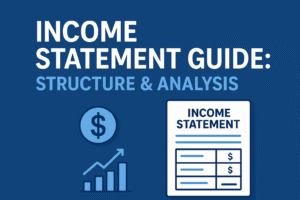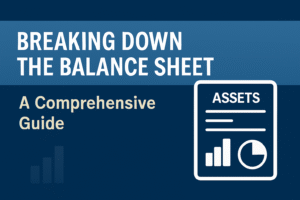In the world of finance and business, accuracy and transparency are non-negotiable. Whether it’s a Fortune 500 company or a local nonprofit, every entity must follow specific rules when recording and reporting financial transactions. These rules are collectively known as accounting principles. They provide the foundation for preparing financial statements that are consistent, comparable, and trustworthy.
What Are Accounting Principles?
Accounting principles are standardized guidelines that dictate how financial information is recorded, analyzed, and reported. These principles ensure that a company’s financial statements present an accurate and fair picture of its financial performance and position. They promote consistency across time periods and between different organizations, allowing stakeholders such as investors, creditors, and regulators to make informed decisions.
These principles are not just technicalities; they reflect underlying concepts such as honesty, reliability, prudence, and accountability in financial reporting.
Understanding the Purpose of Accounting Principles
The primary goals of accounting principles are:
- Consistency – So companies apply the same standards over time.
- Comparability – So stakeholders can evaluate companies side by side.
- Reliability – So reported figures are dependable and unbiased.
- Relevance – So users can make sound financial decisions based on the information.
Without these principles, financial reports could be misleading, making it difficult to detect fraud, assess performance, or ensure regulatory compliance.
The Core Accounting Principles Explained
Here are the key accounting principles that form the foundation of financial reporting:
1. Accrual Principle
Under this principle, revenues and expenses are recognized when they are earned or incurred, not necessarily when cash is received or paid. This matches financial results to the correct period, giving a more accurate picture of business performance.
Example: If a company delivers a service in March but gets paid in April, the revenue is recorded in March.
2. Conservatism Principle
Accountants should choose solutions that result in lower profits or asset valuation when faced with uncertainty. This avoids overstating financial health.
Example: If a company anticipates a potential lawsuit loss, it should record the liability even if the outcome isn’t certain.
3. Consistency Principle
Companies must consistently apply the same accounting methods from one reporting period to the next. Any changes must be clearly disclosed and justified.
Example: A company using the straight-line method of depreciation should not switch to declining balance unless it discloses the reason and its impact.
4. Cost Principle (Historical Cost)
Assets must be recorded at their original purchase cost, not their current market value.
Example: If a piece of equipment is bought for $50,000, that’s the value recorded on the books, even if its market value increases.
5. Full Disclosure Principle
All significant and relevant information must be included in financial statements or notes to prevent misleading users.
Example: If the company has pending litigation, it must be disclosed in the notes, even if it doesn’t impact the current financial numbers.
6. Economic Entity Principle
A business is treated as a separate entity from its owners and other businesses. Its financial transactions should not be mixed with personal finances.
Example: An owner’s car purchase for personal use must not appear in the company’s accounts.
7. Going Concern Principle
It is assumed that a business will continue operating indefinitely unless there is evidence to the contrary. This affects asset valuation and liability classification.
Example: If a company is expected to shut down soon, its assets may need to be revalued based on liquidation value.
8. Matching Principle
Expenses should be recorded in the same period as the revenues they helped generate. This aligns with the accrual principle and ensures financial accuracy.
Example: Commissions paid in January for sales made in December should be recorded as a December expense.
9. Materiality Principle
Only information that would affect the decision-making of a reasonable person needs to be included in financial reports.
Example: A $10 office supply expense may be recorded as an expense immediately rather than as a long-term asset.
10. Objectivity Principle
All financial information must be based on objective evidence, such as invoices, receipts, and contracts, rather than subjective opinion.
Example: A building’s value must be recorded based on purchase documentation, not based on market speculation.
Generally Accepted Accounting Principles (GAAP)
GAAP refers to the collection of accounting rules and standards used in the United States. It is established and updated by the Financial Accounting Standards Board (FASB), an independent nonprofit organization. The members of FASB are appointed by the Financial Accounting Foundation (FAF).
GAAP provides a rigid, rule-based framework that ensures transparency and uniformity in financial reporting. All regulated U.S. entities, including publicly traded companies, government agencies, and nonprofits, are required to follow GAAP. Compliance is verified through external audits conducted by Certified Public Accountants (CPAs).
Real-World Example of GAAP Application:
A U.S.-based retailer must recognize revenue from product sales only after goods have been delivered, even if the customer prepaid a month earlier. If the company changes its depreciation method, it must disclose the reason and the effect on earnings in its financial statements.
International Financial Reporting Standards (IFRS)
IFRS is a globally recognized accounting framework developed by the International Accounting Standards Board (IASB). It is used in over 160 countries, including most of Europe, Asia, and parts of South America and Africa.
Unlike GAAP, IFRS is principles-based. It allows more professional judgment and flexibility, focusing on the substance of transactions over strict rules. IFRS aims to make financial reporting more globally comparable and efficient.
Real-World Example of IFRS Application:
A UK-based tech company using IFRS can revalue its fixed assets to fair market value if there’s strong evidence. Under GAAP, this revaluation would not be allowed; the asset would remain recorded at historical cost.
GAAP vs. IFRS: Key Differences
| Aspect | GAAP (U.S.) | IFRS (International) |
| Approach | Rule-based | Principles-based |
| Asset Valuation | Based on historical cost | Allows fair value revaluation |
| Inventory Methods | LIFO and FIFO permitted | LIFO not allowed |
| Development Costs | Expensed immediately | Can be capitalized if future benefit is likely |
| Revenue Recognition | Detailed, structured guidance | Flexible, judgment-based guidance |
| Write-down Reversals | Not allowed | Allowed under certain conditions |
| Compliance Requirement | Mandatory for U.S. public companies | Mandatory in most global jurisdictions |
Why These Principles Matter
Following accounting principles ensures that:
- Investors and creditors can make informed decisions based on comparable and reliable data.
- Regulators can verify that companies are meeting their financial obligations.
- Management can make strategic business decisions using accurate financial data.
- Auditors have a consistent framework to assess compliance and detect irregularities.
Without these principles, financial statements could be inconsistent, misleading, or manipulated, ultimately undermining trust in the financial system.
Conclusion
Accounting principles are more than just rules—they are the pillars of financial integrity. Whether following GAAP in the U.S. or IFRS globally, organizations must adopt these standards to ensure transparency, consistency, and accuracy in their financial reporting. Understanding how these frameworks operate, and their key differences, is essential for professionals, business owners, investors, and regulators in today’s interconnected financial world.







